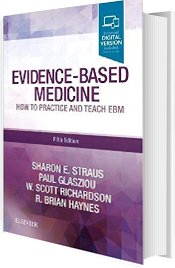EBM requires the integration of the best research evidence with our clinical expertise and our patient’s unique values and circumstances.
Why the interest in EBM?
The spread of EBM has arisen from several realizations:
- Our daily need for valid and quantitative information about diagnosis, prognosis, therapy and prevention.
- The inadequacy of traditional sources for this information because they are out of date, frequently wrong, ineffective, or too overwhelming in their volume and too variable in their validity for practical clinical use.
- The disparity between our diagnostic skills and clinical judgment, which increase with experience, and our up-to-date knowledge1 and clinical performance2 , which decline.
- Our inability to afford more than a few seconds per patient for finding and assimilating this evidence3 , or to set aside more than 30 minutes per week for general reading and study.4
- The gaps between evidence and practice (including overuse and underuse of evidence) lead to variations in practice and quality of care.5 6 7
These challenges have been met with a number of potential solutions facilitate the practice of EBM:
- The development of strategies for efficiently tracking down and appraising evidence (for its validity and relevance).
- The creation of evidence synopsis and summary services, which allow us to find and use high-quality pre-appraised evidence.8
- The creation of information systems for bringing these evidence resources to us within seconds.9
- The identification and application of effective strategies for lifelong learning and for improving our clinical performance.10
This book is dedicated to describing these innovations, demonstrating their application to clinical problems, and showing how they can be learned and practiced by clinicians who have just 30 minutes per week to devote to their continuing professional development.
- Evans CE, Haynes RB, Birkett NJ, et al. Does a mailed continuing education program improve clinician performance? Results of a randomised trial in antihypertensive care. JAMA. 1986;255:501-504.
- Sackett DL, Haynes RB, Taylor DW, et al. Clinical determinants of the decision to treat primary hypertension. Clin Res. 1977;24:648.
- Sackett DL, Straus SE. Finding and applying evidence during clinical rounds: the ‘evidence cart’. JAMA. 1998;280:1336-1338.
- Sackett DL. Using evidence-based medicine to help physicians keep up-to-date. Serials. 1997;9:178-181.
- Shah BR, Mamdami M, Jaakkimainen L, et al. Risk modification for diabetic patients. Can J Clin Pharmacol. 2004;11:239-244.
- Pimlott NJ, Hux JE, Wilson LM, et al. Educating physicians to reduce benzodiazepine use by elderly patients. CMAJ. 2003;168:835-839.
- Kennedy J, Quan H, Ghali WA, et al. Variations in rates of appropriate and inappropriate carotid endarterectomy for stroke prevention in 4 Canadian provinces. CMAJ. 2004;171:455-459.
- Haynes RB, Cotoi C, Holand J, et al. Second-order peer review of the medical literature for clinical practitioners. JAMA. 2006;295:1801-1808.
- Sackett DL, Straus SE. Finding and applying evidence during clinical rounds: the ‘evidence cart’. JAMA. 1998;280:1336-1338.
- Effective practice and organization of care group. The Cochrane Library. London: Wiley; 2009.

